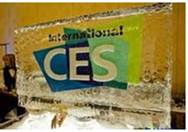
Televisions were among the most talked-about things at CES 2013—the 2013 International Consumer Electronic Show (国际消费类电子产品展销会) last week in Las Vegas, Nevada. They were bigger and better with some of the highest technology (技术). Some TVs used a new technology called OLED. They were bigger, thinner and lighter, offered better colour and were brighter than traditional TVs using LED.
Ultra High Definition TVs were also popular. Most of the TVs shown on the exhibition used 4k technology.
Smart TVs this year were smarter. Many offered technology that users have a more personalized (个性化的)experience. One such TV from TCL can know who is watching with the help of new technology. Then it can offer programmes according to the user’s usual interest. Another TV from Panasonic offers a similar personalized user experience.
Size also played an important part in CES 2013. TVs changed in size from big to bigger, with at least two companies —Samsung and Hisense —showing TVs that are 110 inches large on the exhibition.
The yearly CES is the biggest technology show in North America and one of the biggest in the world.
It’s a meeting of the brightest minds and the top leaders from many industries and those who want to know about the future.
Digital health and fitness inventions were also big at CES 2013. There was even a fork that tells you when you are eating too fast.
The show had over 3,200 different companies showing more than 20,000new products in about 26 miles of exhibition space.
小题1:Which difference between OLED and LED is NOT mentioned in the passage?
| A.Weight | B.Colour | C.Size | D.Price |
小题2:The writer takes TCL and Panasonic for example to tell us _________.
| A.smart TVs were smarter at CES 2013 |
| B.Ultra High Definition TVs were popular at CES 2013 |
| C.size played an important part in CES 2013 |
| D.digital health and fitness inventions were big at CES 2013 |
小题3:In which kind of the magazine can we probably read this passage?
| A.Entertainment | B.Technology | C.Sports | D.Health |
小题4:From the passage, we can know __________.
| A.CES 2013 has not been held yet |
| B.TVs at CES 2013 were smaller than before |
| C.many companies attended CES 2013 |
| D.no leaders from industries appeared at CES 2013 |